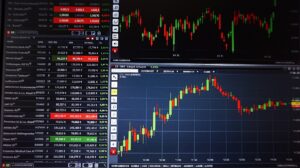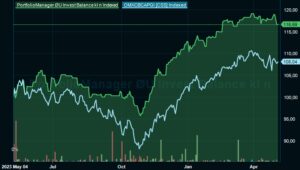Fra Zerohedge:
With the VIX once again pummeled on Friday and set to open below 10 yet again, here are some statistics from Kyle Beard of Bloomsbury advisory: “The VIX has only traded below 10 41 times since 1993 (intra-day). 21 of those occurrences have taken place since May 1, 2017. When you consider there have been 6,179 trading days since 1993, you realize how incredible this is.”
By the numbers:

However, it’s not just the VIX: as BofA’s David Woo points out, volatility across financial markets has collapsed in recent months:
- The MOVE index, which measures interest rate volatility across the US yield curve, is hovering just above the 52 level that represents the trough of the index since 1988. Only in 2007 and 2013 was the index lower, and only barely.
- VIX has again dropped below 10. The only time it was lower since the inception of the index in 1990 was briefly in 1993.
- 3-month EUR/USD vol is now below 7. Since the inception of the euro, EUR/USD vol was only lower twice, in 2007 and 2014.
BofA aggregates these volatility measures by first taking z-scores of the individual measure and then taking an average of the three series. The results are shown in the chart below. The aggregate volatility measure is near its lowest level in twenty years.
As the chart above shows, there are only two other periods during which volatility was as depressed as it is right now:
- Early 2007: The consensus at the time was that the Fed had completed the tightening cycle (the last hike was in June 2006) and was likely to remain on hold for the foreseeable future.
- Early 2014: The consensus at the time was that after the end of the winding down of QE4, the Fed would be in a holding mode for an extended period.
Woo then notes that what these two episodes have in common “was that the Fed was seen as either done with hiking rates or still far away from starting to hike rates” and adds that “this makes it very difficult to reconcile the current depressed level of volatility and the fact that the Fed is still in the middle of its hiking cycle.”
And, adding to BofA’s confusion, Woo says the he would go one step further: “If the market is underpricing the uncertainty with respect to the outlook of US monetary policy, we are even more concerned that it seems totally impervious to the risk of two potentially disruptive, if not dangerous, Games of Chicken likely to unfold in the summer and the beginning of the fall.”
While we will have more to say on these two particular “games of chicken”, we fast forward to Woo’s conclusion, in which he notes that “we find it difficult to reconcile the record low volatility in financial markets at the moment with growing political risk in Washington and geopolitical risk in Asia. There are many reasons why we are living in a different world than the one we used to know and we would caution against relying too much on history for forecasting the likely outcome of these risks.”
It appears that what is bothering David Woo is the same thing that bugged DB’s Aleksandar Kocic two weeks ago, who however unlike Woo, managed to not only define this decoupling between “risks” and markets, calling it simply “complacency”, but also quantified it and found precisely when the market “broke” – some time in 2012.
As a reminder, this is what Kocic said:
Current levels of complacency are alarming. This is what everyone is talking about. Despite growing uncertainties and tensions, the market volatility refuses to rise. Persistence of low volatility is increasing the penalty for potential dissent and reinforces one sided positioning. As a consequence, the risk of disorderly unwind is growing. And the longer this regime continues, the lower the threshold of painful unwind. Currently, VIX at 15% is perceived as a problem although before the crises it had traded above 20% most of the time. Similar observations hold for rates gamma, currently around 60bp, compared to pre-crisis averages around 100bp.
While we know what caused the problem (central banks), and when it emerged (2012), the open questions of when and why this decoupling will (violently) end and how it will impact asset prices remains unanswered.
















